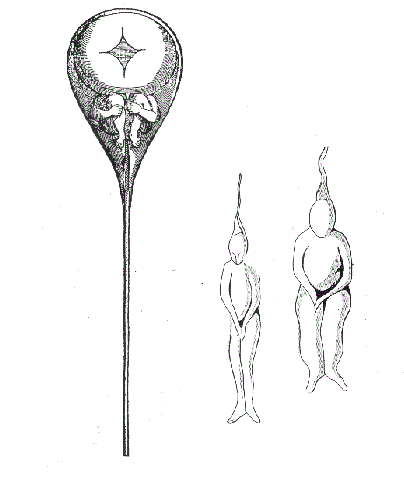Preformationism & the Homunculus
October 21, 2010
In 1694 Nicolaas Hartsoeker, in his Essai de Dioptrique produced an image of a tiny human form curled up inside a sperm cell, He referred to it as petit l’infant, the small infant. This image, depicting what historians now refer to as the homunculus, has become iconic of the theory of preformationism. Preformationism, a philosophical theory of heredity, claimed that either the egg or the sperm contained a complete preformed individual, the homunculus. The question of what the primary carrier was, was a contentious issue between the spermists (the sperm as primary carrier) and the ovists (the egg as primary carrier).
The spermists’ theory held the belief that the sperm was in fact a “little man” that was placed inside a woman for growth into a child. It was later pointed out that if the sperm was a homunculus, identical in all but size to an adult, then the homunculus may have sperm of its own. This led to a reductio ad absurdum with a chain of homunculi “all the way down“. Philosopher Nicolas Malebranche was the first to advance the hypothesis that each embryo could contain even smaller embryos ad infinitum, like a Matryoshka doll.
[…] found extremely small people engaged in all sorts of activities. According to Okagawa the tiny ‘homunculus’ had a stature of only 1/350 that of contemporary man, but already had the same basic shape. Even […]